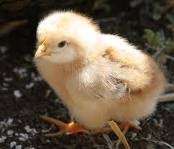I have a fabulous story to share, and a really disturbing process to share that is used in agribusinessto get rid of unwanted male chicks. Let’s start with the fabulous story.The other day, I was driving along a busy intersection near my house, when I saw a man literally stopping traffic. He had parked his car in the right hand turn lane, during rush hour. Why would he do such a thing? Well, a mama duck was on the sidewalk, waiting for her baby ducklings to follow. The problem was, the babies could not get up the curb…they were too small to jump up or climb it! The mama duck was squawking, quacking, I imagine coaxing, but no luck. So this 50 something year old man (who did not look like a tree hugging type at all) parks his car in the lane, gets out, takes out his laptop, and lets the ducklings step on it in the hopes that the ducklings could then climb up the curb. But they still couldn’t make it! So the man, with mama duck nipping at him, lifts up the lap top and gets the chicks over the curb, out of traffic, and safely to their mama!! It was very cool to see. I felt I witnessed the better side of humanity (on a small scale) that day.
But, I have to admit, within minutes of witnessing that scene, I thought of the video I have linked below. I’ve known about this practice for several months now, but have been hesitant to blog about it. I guess I didn’t want to be thought of as someone radical on the animal rights issues. Although I eat vegan, I think traditional vegans have, in some ways, done more harm than good for their cause by being so extreme about animal rights. However, after seeing the “Duck Man” do what he did, I couldn’t help but wonder how he would feel about “chick grinding” practice that is video taped below. I think the video pretty much speaks for itself, but in a nutshell, there is too much demand for female chickens, and not enough for males. So, what is big agribusiness to do? See the video. And for those that don’t believe it, which was me the first time I saw it, I’ve verified this practice from several sources. (However, if you find out I am mistaken, I will be happy!!)
http://www.epicurious.com/articlesguides/blogs/editor/2009/09/the-chickgrinding-video.html

